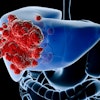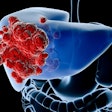A neurofunctional ultrasound method can provide in vivo visualization of odor perception in the brain, shedding light on the functioning of the olfactory system, researchers from France reported in an article published in NeuroImage.
The study came from a collaboration between a team led by Mickael Tanter of the Institut Langevin and one led by Hirac Gurden of the Laboratoire Imagerie et Modélisation en Neurobiologie et Cancérologie. The researchers found that their functional ultrasound technique could track activity in the piriform cortex of rats during odor perception.
While the olfactory system is well-known and is similar in organization among organisms ranging from insects to mammals, its functioning remains unclear. To address this gap in knowledge, the researchers focused on the olfactory bulb and the piriform cotex, the two brain structures that act as major olfactory relays (NeuroImage, July 15, 2014, Vol. 95, pp. 176-184).
The olfactory bulb is located between the eyes in the rat, but it's difficult to obtain functional images in a living animal of the piriform cortex, which is deep-seated in the brain of rodents, according to the authors. The functional ultrasound technique developed by Tanter's team, however, was able to monitor the neuronal activity in the piriform cortex.
The method yielded spatial resolution of 80 micrometers and temporal resolution of a few tens of milliseconds, the group noted. By recording volume variations in the blood vessels irrigating the different brain structures, the location of activated neurons could be determined.
The recordings by Gurden's team using the technique made it possible to observe the spatial distribution of activity within the olfactory bulb; when an odor was perceived, blood volume increased in clearly defined areas and each odor corresponded to a specific pattern of activated neurons.
The images also revealed an absence of spatial distribution in the piriform cortex. At this level, two different odors triggered the same activation throughout the region, according to the authors. While noting that the cellular mechanisms responsible for the disappearance of a spatial signature are not yet clearly defined, the researchers had several hypotheses.
For example, the piriform cortex could be a structure that serves not only to process olfactory stimuli but also to integrate and memorize different data types. By making abstractions of the strict odor-induced patterns, it would be possible to make associations and achieve a global concept, such as recognizing a single odor of coffee based on the hundreds of odorant molecules found in the beverage, according to the authors.
The researchers now plan to focus on the effects of learning on cortical activity to elucidate its role and the specificities of the olfactory system.
They also said that focused ultrasound offers advantages in cost, ease of use, and resolution over other imaging techniques such as MRI that are already based on the link between blood volume and neuronal activity. It also provides easier access to the deeper structures that are often located several centimeters beneath the cranium.




















